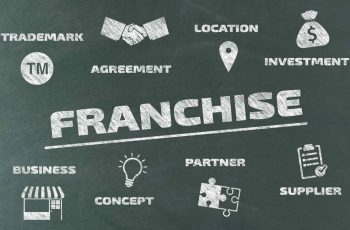
Ideally, no business wants to be in debt. In reality though, pretty much all businesses need to borrow money at some stage or another in their lifetime. It may be that a budding entrepreneur needs to finance their bright idea with a start-up loan or an existing business may need some capital in order to expand. And of course, even a successful business may sometimes need occasional credit in order to help alleviate temporary challenges with cash flow.
The crucial thing for a business that needs to borrow, is to be smart about it. Careful, thought-out borrowing can mean getting better rates and repayment terms as well as dealing with an understanding, reasonable lender. On the other hand, reckless borrowing can saddle businesses with harsh repayment terms and needless stress for impatient lenders. In this post, we will take a look at 5 proven ways to be smart about debt.
Manage Your Credit Score
There are good lenders offering good loans and then, there are bad lenders offering bad loans. In order to be considered for a loan for the former, a business needs to have an acceptable credit score. You should already know that every time you or your business applies for any form of credit or even a utility contract, it is registered on the credit register which lenders use to assess your creditworthiness.
In order to develop and maintain a decent credit score, it is important to have some credit to prove that you can be trusted with it – this may mean taking out a small business overdraft facility or using a credit card to make small business purchases. However, be very careful never to exceed or even reach your current credit limit and also be sure to make all due payments on time.
A bad credit rating can be repaired over time, but it is best to try and stay on the right side of the credit register.
Secured Vs Unsecured
Secured borrowing is when the borror offers some form of collateral for the loan. Typically this takes the form of property such as a house, or a business premises. Other forms of security though can include tools of the trade and automobiles registered in either the name of the business, or the directors. The advantage of secured borrowing is that a borrower can obtain larger amounts, and interest rates are usually significantly lower but on the downside, failure to maintain repayments can mean forfeiting the security asset.
Unsecured lending is when there is no collateral. As the lender is taking a larger risk, interest rates are usually higher and loan amounts smaller. One notable advantage of unsecured lending is that it can be arranged a lot faster than secured lending for a business that needs a short-term solution.
Another consideration is short term vs long term lending – secured loans can be offered over longer repayment periods of up to 25 years whereas unsecured loans usually have a repayment period of 5 years or so.
Don’t Over Borrow
Obviously, the more money a business borrows the more it has to pay back. However, bear in mind that a larger capital sum means that more interest will accrue, and usually means higher monthly repayments.
Therefore it is vital not to overborrow. Before applying for a loan, a business should not only assess how much it thinks it needs to borrow but also how much it can safely afford to repay. Remember that income can go both up and down and a sudden loss of custom may cause cash flow problems. As a rule of thumb, try to ensure that the monthly repayment is no more than 0.75 of your businesses current monthly surplus income – that means you can take a hit of 25% and still maintain the loan.
Pay Attention To Interest Rates
As we touched on above, secured lending offers better interest rates than unsecured lending. There are however many other considerations to take into account when looking at interest rates.
Firstly, some loans are offered at a fixed interest rate, whereas others are at variable rates that tend to fluctuate up and down with central bank interest rates. The advantage of fixed rates is that the rate is locked in providing much welcome certainty. However, fixed rates do tend to be a bit higher than variable rates and in the result of a falling interest rate, you can end up paying well over the odds.
Variable interest rates are usually offered at a lower preliminary amount but they do pose a risk. If there is a spike in inflation (which we are beginning to see in 2022) then the interest rate on the loan will shoot up causing monthly repayments to increase substantially; this can easily force a business into defaulting in the repayments.
Work With Your Lender
Backtracking a few steps, it is always worth trying to obtain a loan from a reputable and respectable lender. If a business runs into difficulties in maintaining the payments, then they need to know that the lender will be understanding and as patient as possible in trying to rehabilitate the situation.
Many businesses go through cash flow problems which can lead to defaults. Some lenders are quite understanding of this whereas others can be a bit “trigger” happy with litigation and foreclosure. High street, well-regarded lenders tend to have better relationships with their borrowers than ‘back street’ or less regarded ones. That said, if a struggling business is honest, transparent, and proactive in managing repayment issues, then this will usually result in the lender being more patient and cooperative too.
Final Thoughts on Smart Lending
In summary, there will always be an inherent risk in lending for both borrower and lender. That said, by taking some simple precautions and staying focused, a business can help ensure it is offered access to the best rates and terms which makes business borrowing that bit easier and safer.

